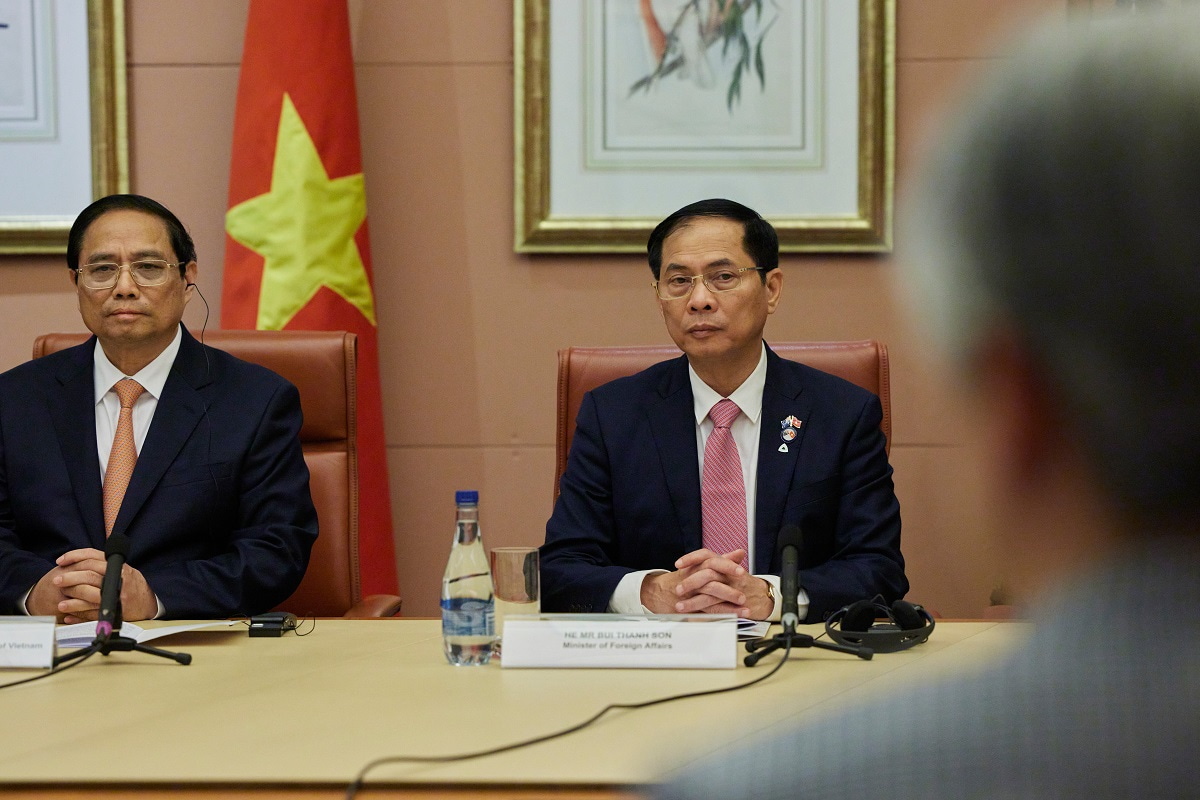Investors looking at Vietnam know that the risks are higher than in developed countries. The key question is whether investments will generate higher risk-adjusted returns. While acknowledging the challenges outlined in an article by Ahmed Albayrak and Roland Rajah in The Interpreter this week, recent political appointments have brought a measure of stability.
The upheaval of recent years stems from competition for the top job of Communist Party General-Secretary, which is up for grabs at the next party congress in January 2026. The current General-Secretary is too old to continue in the role.
The key contenders for the role are newly appointed President To Lam and Prime Minister Pham Minh Chinh. Lam, a key figure behind the country’s anti-corruption campaign, was elevated from his post as Minister for Public Security and is the front-runner. An ally was appointed to his former role, allowing Lam to continue to use the anti-corruption campaign against political rivals.
The neat divide between Vietnam’s security and technocrat establishments is a fallacy.
Prime Minister Chinh has been in office since 2021 and is the international face of efforts to attract greater foreign investment and grow exports. He inked a new Comprehensive Strategic Partnership with Australia during a March 2024 visit.
Some commentators frame the competition between the two contenders as the security establishment (Lam) versus the technocrats (Chinh). In this interpretation, Lam’s rise up the ranks – potentially culminating in the General-Secretary role – is a sign that Hanoi is pulling closer to Beijing and will embed a security state along Chinese lines.
The neat divide between Vietnam’s security and technocrat establishments is a fallacy. While Chinh is associated with the drive to attract investment, he also came up the ranks of the security system. Likewise, Lam’s new role as president requires him to represent Vietnam internationally. He will be exposed to global business leaders clamouring for greater certainty around their investments.

There are also crucial differences between Vietnam and China.
While China is ruled by president-for-life Xi Jinping, Vietnam has more checks around decision-making, with power shared between multiple public offices and bodies.
Vietnam isn’t shifting closer to China. While there are close ties between the Chinese and Vietnamese Communist Parties, Hanoi is also hedging by doubling down on international ties with the United States, Australia and South Korea. This is part of its longstanding “bamboo diplomacy” to maintain strategic autonomy.
On the economic front, Hanoi will need to maintain a relatively open investment and trade framework regardless of who becomes the next General-Secretary. Vietnam has an extensive network of trade agreements that it is leveraging to attract foreign companies de-risking their China manufacturing.
Hanoi is making an effort to address at least some concerns raised by foreign investors, particularly in the energy sector. In recent months, the government moved quickly to issue a range of regulations to improve access to renewable energy. Maintaining energy supply while transitioning to net zero by 2050 will be key to attracting advanced manufacturing.
If investors decide to push ahead in coming months, they will need to do their homework.
More good news may be on the horizon. The United States will decide by the end of the month whether to remove Vietnam’s designation as a non-market economy. This would give a boost to Vietnam’s exports to the United States by making it harder to apply anti-dumping measures.
While the long-term fundamentals are positive, the question for investors will be whether to navigate or wait out the inevitable political tensions and bureaucratic delays that will mark the 18 months leading to the party congress.
The answer depends on target sector, deal type and business size.
The Communist Party’s legitimacy rests in part on its ability to meet the demands of Vietnam’s booming middle class. So the government wants to see investment in sectors meeting these needs: health, energy, education, and consumer products. However, public-private partnerships and purchases of state assets will be highly sensitive and investors should proceed with caution.
Vietnam’s slow bureaucracy means that investors should stick with established business models and approval processes. Now is not the time to attempt to push an innovative deal structure through the system.
Smaller deals will be harder to close. The government provides extensive support to facilitate investments by major multinationals such as Samsung and troubleshoot issues they encounter. While Australian investors shouldn’t expect this level of service, they may be able to explore third country partnerships to leverage the connections of multinationals.
If investors decide to push ahead in coming months, they will need to do their homework. This means investing time to learn about Vietnam, its business culture, and the target sector. Thorough diligence and a trusted local partner will be essential. The Australian government has also established a deal team to facilitate investment that can help with navigating the bureaucracy and politics.
The next couple of years will be bumpy as contenders vie for the top job. But with the right strategy and advice, investors can still achieve strong risk-adjusted returns.

